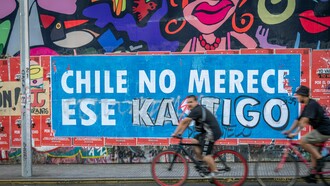In a world that has seemingly embraced globalization as the path to progress, there's a hidden story that needs to be told. According to a study conducted by the United Nations, a staggering 1.5 billion people survive on just one dollar a day or less, with a significant majority of them being women and children (UN, 2015). This grim reality isn't just a statistical anomaly; it's a deeply entrenched pattern that has led sociologist Diana Pearce to coin the term "feminization of poverty" (Christensen, 2019: p.1). This concept paints a stark picture of how women and children are disproportionately represented among the world's poor compared to men, and it all stems from the persistent gender biases and oppressive structures within societies that perpetuate unequal distribution of resources.
Poverty, in its true essence, exploitation is further exacerbated by the intersectional nature of the feminization of poverty. It is the denial of basic opportunities and choices necessary for leading a long, healthy, and creative life (Parr, 1999: p.100). In this opinion piece, we will delve into the intersection of globalization and the "feminization of poverty," focusing on the impact it has on women in developing countries, particularly in South Asia.
South Asia, a region with diverse cultures and traditions, shares common themes of a patriarchal societal model, widespread poverty, and a significant gender wage gap. At first glance, globalization might appear as a saviour for women in these developing nations, providing opportunities to join the workforce and empowering them. However, the harsh reality is that despite the increasing number of women entering the workforce, their labour is consistently undervalued and exploited. Pakistan, for instance, boasts one of the world's highest gendered pay inequalities, with women earning 34% less than men on average (ILO, 2019). Shockingly, women in Pakistan make up 90% of the bottom 1% of wage earners, reflecting the depth of this issue.
Globalization has also facilitated the urbanization of cities, where most well-paying jobs are concentrated. However, women in South Asia often lack land ownership, rendering them financially dependent on their spouses. Moreover, the absence of affordable and safe transportation options in urban areas further hinders their pursuit of financial equality. These systemic challenges contribute significantly to the feminization of poverty.
But let's not forget the role of neoliberalism, an emerging system under globalization that has paved the way for the privatization of various sectors. While this approach may promise short-term economic gains, it often disregards the long-term well-being and social justice of marginalized groups (Prizzia, 2005). Neoliberalism has eroded the welfare state's role in providing for marginalized communities, forcing women to either depend excessively on their families or accept low-paying, unregulated industrial jobs. Women workers find themselves vulnerable in this privatized landscape, devoid of job security. In South Asia, married women are frequently pressured to end their careers by their spouses, or they face termination during maternity periods.
This exploitation is further exacerbated by the intersectional nature of the feminization of poverty. Western influencers and their neoliberal feminist ideologies often protect the rights of privileged women, perpetuating the exploitation of marginalized women in developing countries. Economic globalization has transformed women in South Asia into the primary labour force in factories producing garments for Western fashion brands. These women endure wages below the minimum wage, lack job security, and work in unregulated environments. Bangladesh, for instance, heavily relies on the garment industry, with about 80% of its exports coming from this sector, employing around 4 million people, predominantly women (Karim, 2020).
Recent times have exposed the harsh reality of this exploitation. When global stores shut down due to the COVID-19 pandemic, Western retailers suspended orders without paying the women already toiling for low wages. Bangladesh's garment exports plummeted by a staggering 84%, leaving factory owners and their employees in dire straits (Karim, 2020). Extensive research conducted by the University of California, Berkeley, has unearthed disturbing instances of exploitation in countries like India and Bangladesh, where marginalized women and young girls work tirelessly for mere cents per hour, effectively perpetuating both female labour exploitation and child slavery (Kara, 2019).
Even well-known Western feminist icons, who often champion feminist causes, have come under scrutiny. Beyoncé, for instance, has built her empire on the exploitation of Sri Lankan low-paid workers, paying them as little as $6.17 a day and 64 cents an hour while selling their products for exorbitant prices (The Sun). This exploitation exemplifies the systemic nature of the problem.
In conclusion, while globalization has opened doors for women to access monetary resources and better opportunities, it simultaneously exploits their labour, perpetuating structural labour disadvantages. The feminization of poverty in developing South Asian countries persists due to various neoliberal tools under globalization, including patriarchal societal models, trade liberalization, and workplace privatization, leading to unregulated markets. To empower women in these regions, we must shift our focus beyond economic growth and prioritize their economic security and basic rights, ultimately creating opportunities that truly lead to empowerment, rather than merely chasing the illusion of better opportunities.
Bibliography
United Nations (2015) The world’s women 2015: trends and statistics. United Nations, Department of Economic and Social Affairs, New York, Statistics Division.
Casper, L. M., McLanahan, S. S., & Garfinkel, I. (1994). The gender-poverty gap: What we can learn from other countries. American sociological review, 594-605.
Fukuda-Parr, S. (1999). What does feminization of poverty mean? It isn't just lack of income. Feminist Economics, 5(2), 99-103.
Chant, S. (2016). Women, girls, and world poverty: empowerment, equality or essentialism?. International Development Planning Review, 38(1), 1-24.
Bourguignon, F., & Morrisson, C. (2002). Inequality among world citizens: 1820-1992. American economic review, 92(4), 727-744.
Global Wage Report 2018/19: What lies behind Gender Pay Gap. (2020).
Prizzia, R. (2005). An international perspective of privatization and women workers.
Karim, N. (2020). Western fashion brands that 'exploit' Bangladesh suppliers face blacklisting.
Kara, S. (2019). Tainted garments: the exploitation of women and girls in India’s home-based garment sector. Berkeley, University of California.















